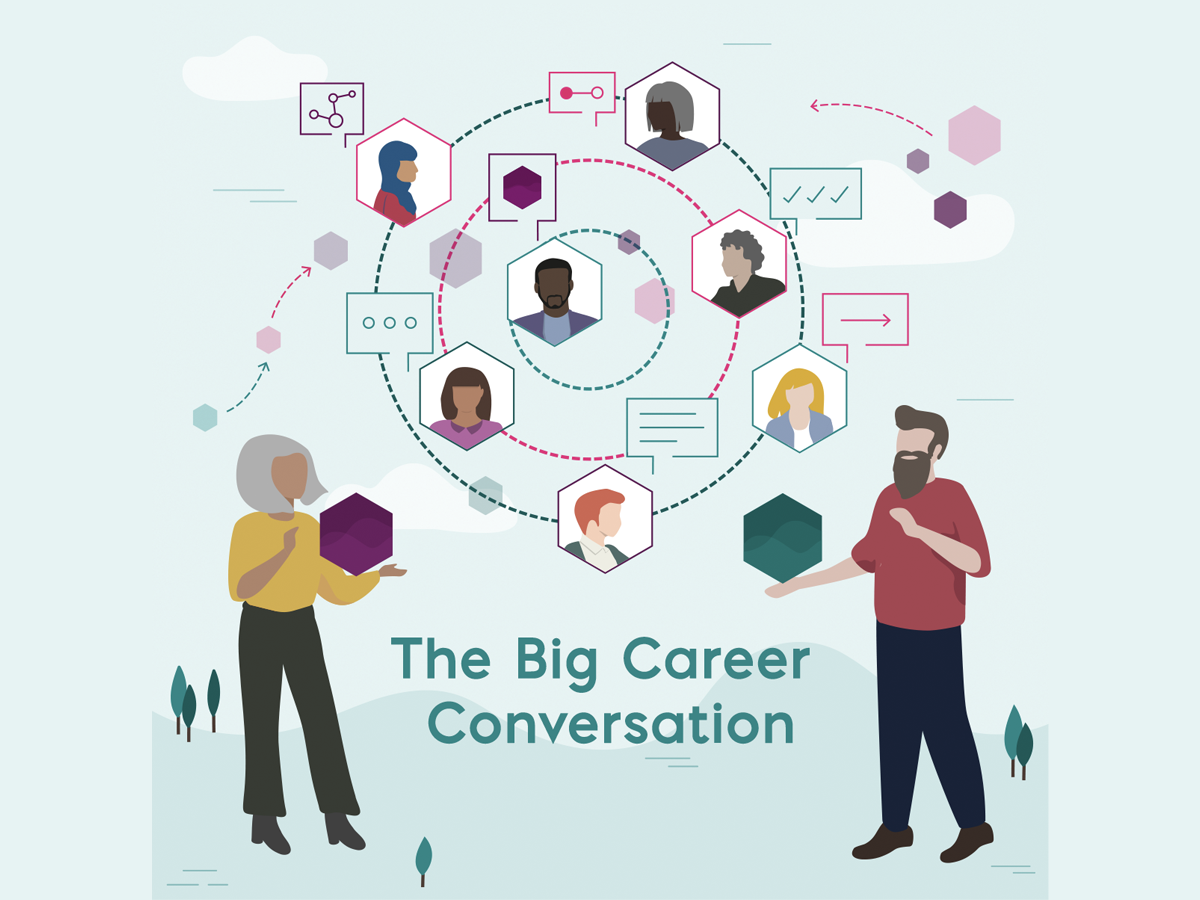Is your business guilty of trying to improve career development by introducing a stream of well meaning, but ultimately unsustainable initiatives? If so, you are far from alone!
“On the surface it can look like there’s a lot of possibility for employees, but the tools often don’t reflect reality and lose credibility”
“Leaders often think a strategic plan means having a bold umbrella statement with a bunch of tactical deliverables underneath, and nothing in between. Honestly, this rarely works”
To create real impact, you need to join up the dots
- Between the business strategy, people strategy and career strategy
“Over the past year, we have seen a step up in expectations and an increased focused on personal development in the people strategy. We need to ensure there is clear alignment and a coherent set of priorities”
- Ensure HR policies and practices are integrated and pulling in the same direction
“It’s unhelpful to encourage international mobility then have a policy that only allows it for certain grades. If we are serious about mobility, we need to be open up different opportunities”
- Align the career philosophy, narrative, mindset and conversations
“An inclusive career philosophy requires an inclusive narrative, inclusive mindsets and inclusive conversations”
- Find the sweet spots between organisational needs and wants and individual needs and wants
“The uncertain business environment means we are less able to predict future jobs, so defined career pathways are less relevant. As the business has to become more agile, we need our people and careers to become more agile too”
There are some great examples of businesses having success in grappling with these issues.
Shifting the culture by shifting the conversations
Leadership in essence is all about conversations, many different types, but still conversations. Changing the conversations, creates the possibility of a shift in the culture. There are lots of ways to do this, but the simplest is to drop in nuggets of insight – such as “did you know that only 5% of people move between our businesses, but 15% leave to further their career – are we comfortable with that?”
Creating capacity for new experiences
Learning is itself a key skill for the future, and new experiences are the main way to develop learning agility. Some companies are strategically growing their people and their learning by encouraging project working alongside their day job – e.g. one global organisation frees up 20% of people’s time to work on important projects, benefitting the business and the individuals.
Personal intent – connecting at a purpose level
Other companies are becoming more strategic by raising the level of the conversations. For example, at one retail organisation they are supporting their colleagues to clarify their personal intent, helping them to take a more strategic and purposeful approach to their individual and collective careers.
Insight-leading the way
Language in organisations can get in the way. For example, the word strategy often means very different things to different people. Some practitioners are cutting through this issue by developing and using clear and compelling insight to do the talking.
Insight – a penetrating and often sudden understanding, as of a complex situation or problem (Collins Dictionary)
Insight can take different forms, but generally begins with a question – such as “What are careers really like here – historically and now?” “How long do people stay?” “How much do they move around?” “What do people tell us they want?” “Do people leave us better off than when they join?”
Updating beliefs about what a career means
Modern careers are longer sprints – growing experiences, making lateral moves, taking on stretch experiences. It can be hard for some senior leaders with more traditional careers to relate to members of their teams who want to spread their wings, explore, want new experiences more than the bigger job title.
To help their people navigate these modern careers, many organisations are shifting from career paths to experience maps, from piles of job descriptions to job architecture.
Taking time to take stock and plan
People often talk about careers as if they are tangible, physical objects – to be described, given, or built. In practice, careers are powerful social constructs that helps us make sense of our experience and position in the world. Constructs to be made sense of contextually, individually and continually.
Some businesses are creating opportunities for people to pause, make sense of what is going for them, and make deliberate choices about what next. By ensuring they are well informed about future skills, they can make better choices for themselves and the business.
To what extent is your business taking a strategic approach to careers? In what ways could you stimulate different conversations or help in joining up the dots?




